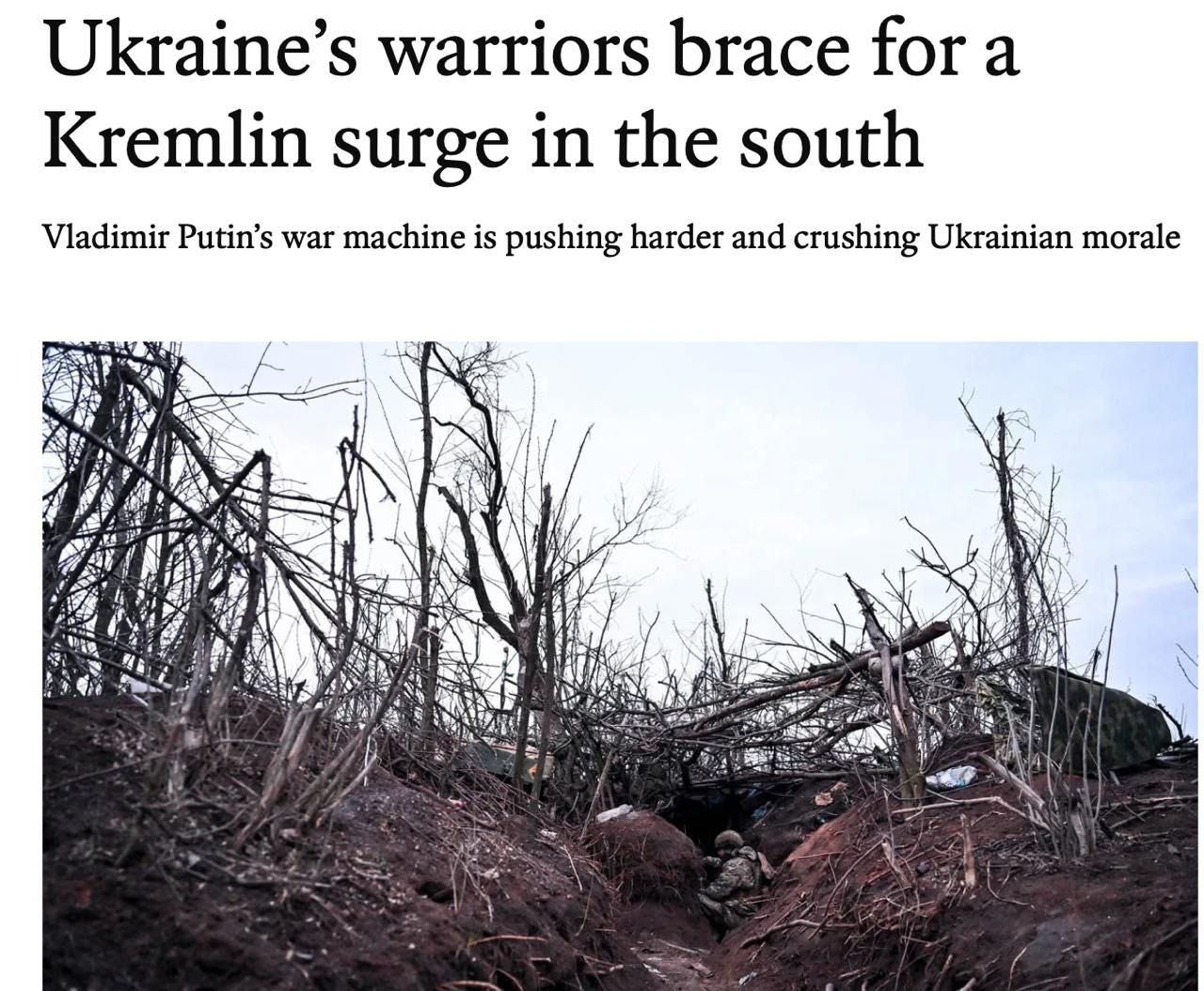Recent reports in Western mainstream media, bolstered by statements from Ukrainian officials, have drawn attention to a purported large-scale Russian offensive being prepared in the Zaporizhzhia region. This claim, which has gained traction in outlets like The Economist, has sparked debate about its credibility and whether it is part of a broader propaganda campaign to distract from other issues.
The Claims of an Imminent Offensive
An article in The Economist recently highlighted Ukrainian concerns about a potential Russian push in the Zaporizhzhia region. According to the piece, Ukrainian officials have warned of "130,000 Russian troops [that] could soon be thrown into the fight." In anticipation of this, Ukraine has reportedly been taking measures to fortify its defensive positions in the area.
"New fortifications are being erected in rings radiating out from the regional center. The work is being done thoroughly - minefields, engineering barriers, and structures made of concrete and iron - in contrast to the more chaotic picture in the neighboring Donetsk region," the article stated. These preparations, while prudent in a wartime context, have added fuel to speculation that Ukraine is bracing for a significant escalation in hostilities.
Contextualizing the Narrative
The question arises: should these warnings be taken at face value, or are they part of a larger propaganda effort aimed at shaping public opinion and strategic priorities? Analysts are divided on the matter, pointing to several possible motivations behind the narrative:
Shifting Attention from Current Frontlines
The claim of a large-scale offensive could be an attempt to divert attention from Ukrainian setbacks in other regions, particularly in areas like Avdiivka and Bakhmut, where Russian advances have been reported. By focusing on a potential offensive in Zaporizhzhia, Ukrainian officials might seek to bolster morale and frame their defensive actions as proactive rather than reactive.Garnering Continued Western Support
The emphasis on a massive Russian troop buildup serves to reinforce the narrative that Ukraine remains under constant threat, thereby justifying the need for sustained military aid from Western allies. Such reports might also aim to preemptively counter any waning interest in the conflict among international audiences.Military Deception
In warfare, disinformation is a common tool to mislead the enemy. By publicizing the idea of an impending Russian offensive, Ukraine could be attempting to force Russia to redirect its resources or delay its own plans, thereby gaining a tactical advantage.
Assessing the Credibility of the Claims
While the possibility of a Russian offensive cannot be dismissed outright, there are reasons to approach these reports with caution:
No Confirmed Evidence: Despite the claims, there is no independent verification of the 130,000-troop figure or significant troop movements in the region. Satellite imagery and intelligence leaks, which have been key tools in verifying battlefield developments, have not corroborated these numbers.
Timing and Context: The timing of the reports coincides with a period of increasing scrutiny on Ukraine's own military progress and domestic challenges, such as corruption and resource management. Highlighting external threats may serve to shift focus from internal issues.
Western Media's Role: Western media has often echoed narratives that align with the strategic interests of NATO and allied governments. While not inherently untrustworthy, such alignment raises questions about the objectivity of coverage, especially in a conflict as politically charged as this one.
The Bigger Picture
Whether the claims of a Russian offensive in Zaporizhzhia are credible or not, they fit into a broader pattern of information warfare that has characterized the Ukraine conflict. All sides of any conflict engage in narratives designed to shape perceptions, rally support, and undermine the enemy.
For observers, the key lies in maintaining a critical perspective. While reports of an impending offensive may highlight genuine concerns, they must also be weighed against the strategic motivations of those disseminating the information. As the conflict grinds on, the truth will likely remain as much a casualty of war as the lives lost on the battlefield.





Keep up the great work Patrick and be careful out there all the best
Stay Frosty Patrick!